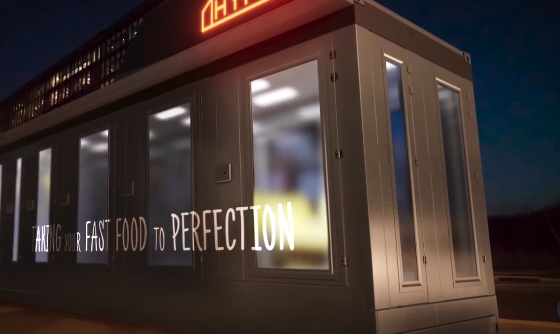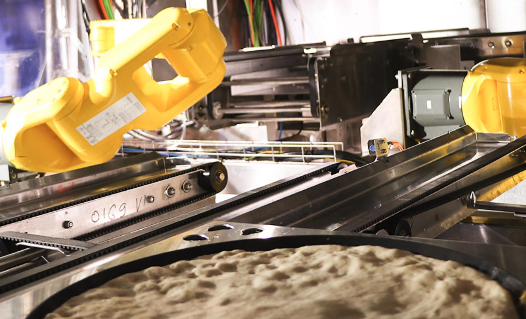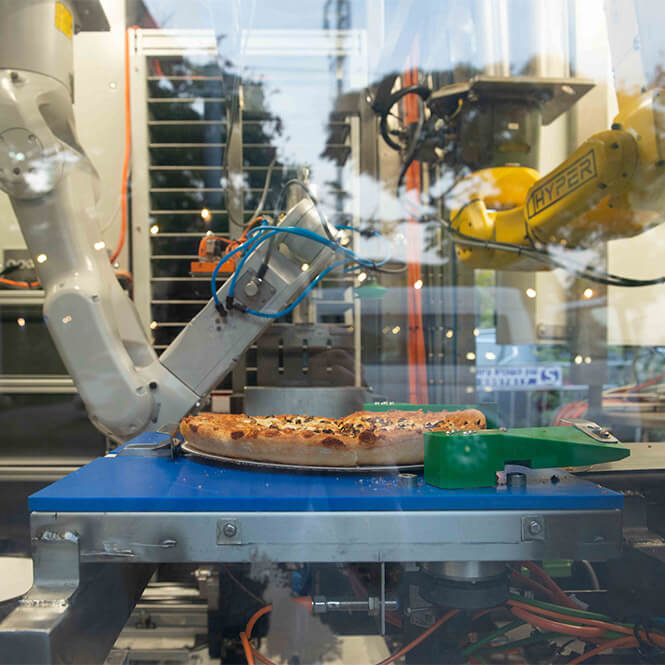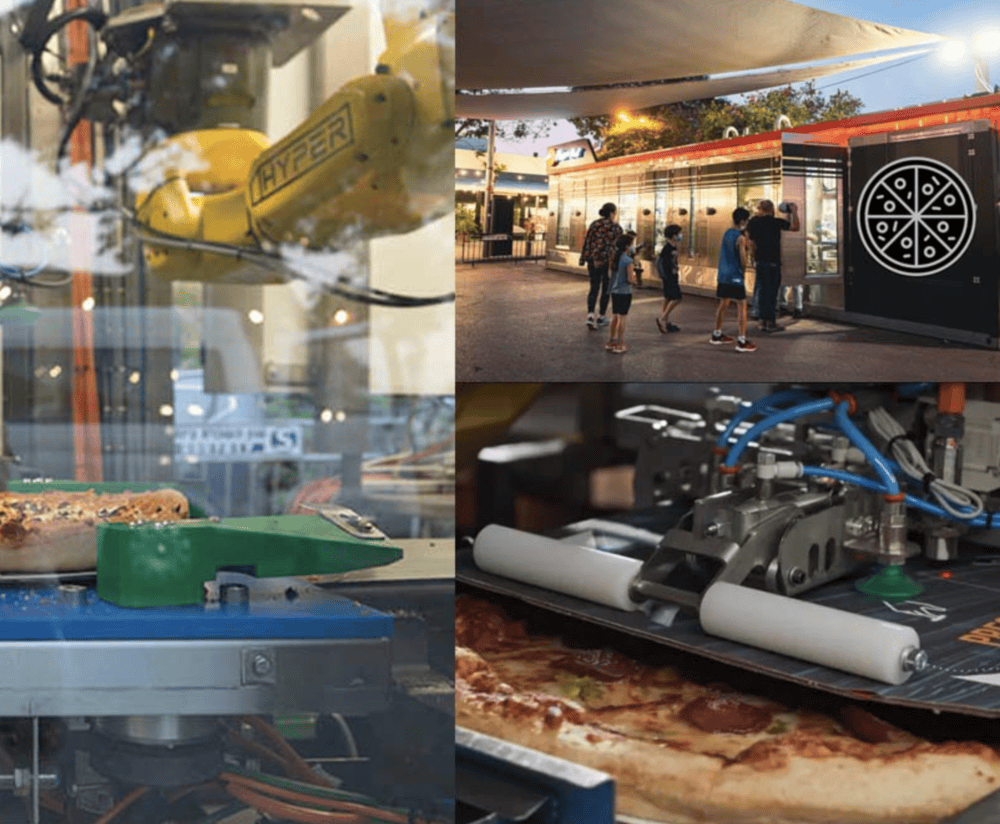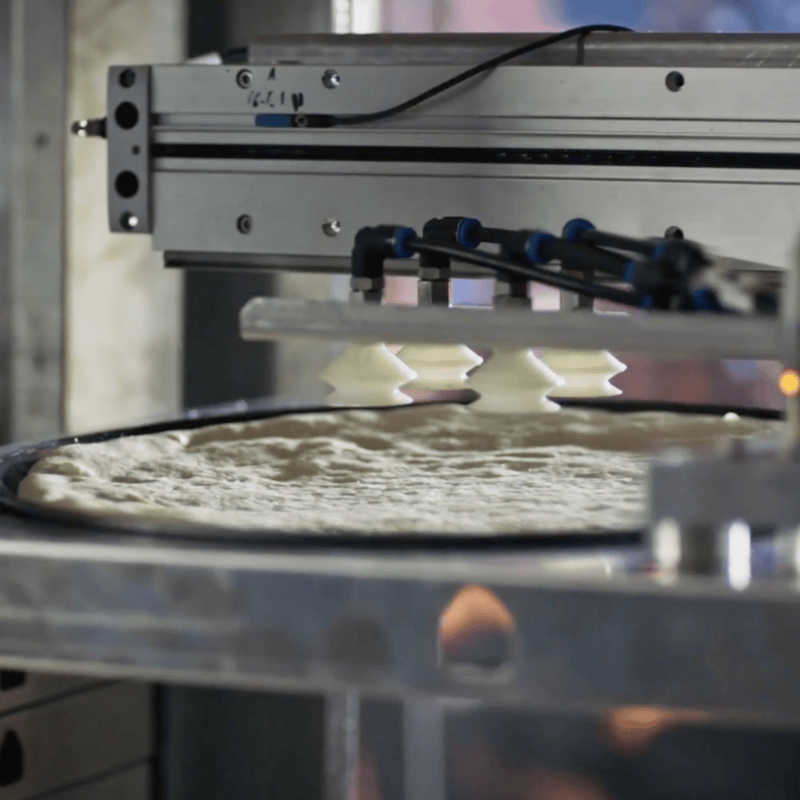Imagine pulling up to your Pizzeria and, instead of the usual kitchen chaos, you see a sleek 20-foot robotic unit quietly orchestrating every meal, never missing a beat. This is not science fiction; it’s the new face of fast-food, and it’s arriving faster than you might think. The numbers are staggering: by integrating robotic kitchens, brands can slash operational costs by as much as 50%. That’s not just a saving, it’s a strategic advantage, especially when you’re dealing with staffing shortages, relentless demand for speed, and customers who expect perfection every time.
As a CEO, you have the chance to lead this charge. Are you ready to transform your business with automation? Can you see your brand thriving as robots take on the grind, delivering crispy fries and piping hot pizzas without a single complaint? What would it mean for your bottom line if you could roll out new stores in days instead of months, all while keeping operations lean and green?
Let’s walk through the six stages of how you, as a fast-food leader, can reshape your chain using 20-foot robotic units. Here’s what you’ll discover in this guide:
- How to achieve scalability and flexibility with plug-and-play robotics
- Ways robotic units unlock operational efficiency
- Steps to boost safety and food quality with automation
- Methods to reduce waste and make your business eco-friendly
- Innovative experiences you can offer to wow customers
- Game-changing delivery solutions that cut costs and speed up service
Ready to see how each step can bring your fast-food operation into the future? Let’s get started.
Stage 1: Unlocking scalability and flexibility
Think about the last time you wanted to open a new location. Endless paperwork, construction headaches, and a mountain of upfront costs. Robotic units change the game. With 20-foot, fully autonomous kitchens, you get a plug-and-play solution that shifts the focus from construction to connection. Companies like Hyper Robotics are already paving the way, with units that can roll out in a matter of days.
You don’t need to commit to massive real estate deals or lengthy build-outs. Instead, you place your unit in a high-traffic area and start serving customers almost instantly. This approach lets you test new markets with minimal risk, scale up during seasonal demand, or even pop up at sports events and festivals. The flexibility means you’re no longer shackled to traditional brick-and-mortar timelines and costs. For more on Hyper Robotics’ model, check out this LinkedIn overview.
Stage 2: Streamlining for unbeatable operational efficiency
Labor shortages aren’t going away anytime soon, and anyone who’s run a fast-food shift knows how quickly mistakes can pile up. Robotic kitchens take human error out of the equation. They work tirelessly, never needing breaks, and they can flip, fry, and even assemble complex orders with robotic precision.
According to Medium, robotic kitchens can reduce operational costs by nearly half. That means more profit in your pocket or more room to reinvest in your business. Imagine a kitchen that never forgets an order, never misplaces an ingredient, and always delivers the same consistent product whether it’s rush hour or closing time. The result? Fewer refunds, fewer complaints, and a reputation for quality that keeps customers coming back.
Stage 3: Raising the bar on food safety and quality control
Food safety scares can cripple a brand. One outbreak or contamination incident, and you’re suddenly scrambling to rebuild trust. Robotic units are designed to follow food safety protocols with unwavering consistency. They don’t cut corners or skip handwashing, they’re programmed for perfection.
Thanks to sensors, smart scales, and AI-driven cooking processes, these units can guarantee every burger is cooked to the right temperature and every ingredient is measured exactly. According to The Wall Street Journal, this kind of automation reduces the risk of foodborne illnesses and customer complaints. You strengthen your brand’s reputation for safety and reliability, which is more important than ever in today’s fast-paced, high-expectation market.
Stage 4: Leading with sustainability and reducing environmental impact
Green is good, not just for the planet, but for your brand’s public image and your bottom line. Robotic units help you run a cleaner, leaner operation. Their precision reduces food waste, thanks to exact measurements and efficient processes. Less waste means lower costs and less trash heading to landfills.
Many units can also be powered by renewable energy, shrinking your carbon footprint. When you make sustainability a visible part of your operation, you appeal to a new generation of eco-conscious customers who want their fast-food guilt-free. Learn more about how sustainability and robotics intersect at Hyper Robotics.
Stage 5: Creating an innovative customer experience
Customers don’t just want fast food, they want a story to share. When you introduce robots like Pepper, BellaBot, or KettyBot for order taking or delivery, you turn an ordinary meal into an event. It’s not just about speed (though robotic units can cut wait times dramatically). It’s about the novelty, the fun, and the sense that your restaurant is one step ahead.
Imagine families snapping photos as a friendly robot brings their order to the table, or tech enthusiasts flocking to your spot because you’re the trendsetter in food automation. According to Proven Robotics these robots can even interact with guests, enhancing engagement and encouraging repeat visits. You’re not just selling burgers, you’re selling an experience.
Stage 6: Revolutionizing delivery with cost-effective robotics
Last-mile delivery is one of the trickiest and most expensive parts of the fast-food business. Human drivers are expensive, and mistakes can quickly eat into your margins. Enter delivery robots. Compact, tireless, and built for efficiency, these bots can deliver more orders per hour and work around the clock.
A report on HowToRobot reveals that robotic delivery systems can cut labor costs while improving delivery speed and accuracy. For chains facing growing demand for home delivery, this is a lifeline. Customers receive their meals faster, and you stay ahead of competitors still scrambling to find enough drivers.
Key Takeaways:
- Deploy 20-foot robotic units quickly to expand into new markets without massive upfront costs.
- Use robotics to improve operational efficiency and reduce labor expenses by up to 50%.
- Guarantee food safety and consistency with AI-powered quality control systems.
- Cut food waste and shrink your carbon footprint by integrating precision automation and renewable energy solutions.
- Elevate customer experience by rolling out engaging, interactive robots for service and delivery.
So, if you’re looking for a way to future-proof your fast-food business, the path is clear. Robotic units aren’t a novelty, they’re the backbone of restaurants ready to thrive in an industry where speed, consistency, and innovation matter most. CEOs who embrace this new standard aren’t just cutting costs; they’re reshaping what it means to serve fast food.
Are you prepared to let robots power your next restaurant launch? What will you do with the time and money you save by automating? And as your competitors catch up, how will you continue to innovate and keep your brand at the forefront? The journey is yours to lead.
FAQ: Transforming Fast-Food with 20-Foot Robotic Units
Q: How can 20-foot robotic units help fast-food chains reduce operational costs?
A: Robotic kitchens can decrease operational costs by up to 50% by automating repetitive tasks, reducing labor needs, and minimizing human error. This streamlining leads to more efficient workflows and allows staff to focus on higher-value responsibilities.
Q: Are robotic units scalable for fast-food businesses looking to expand?
A: Yes, these robotic units are plug-and-play, making them easy to deploy quickly in new markets or high-demand areas. Their flexibility allows chains to scale operations without the heavy investment required to build traditional locations.
Q: What impact do robotic kitchens have on food safety and quality control?
A: Automation ensures consistent adherence to food safety protocols, reducing the risk of contamination and foodborne illnesses. Smart technology within robotic units also improves order accuracy, helping maintain high customer satisfaction and trust.
Q: In what ways do robotic solutions improve sustainability for fast-food chains?
A: Robotic units help minimize food waste through precise portioning and can be integrated with renewable energy sources. Their efficient operations also reduce energy consumption, aligning with consumer demand for environmentally friendly business practices.
Q: How do robotic units enhance the customer experience in fast-food restaurants?
A: Robots can speed up service, decrease wait times, and provide engaging interactions through service robots like Pepper and BellaBot. Their futuristic appeal also attracts tech-savvy customers and differentiates brands in a competitive market.
Q: Can robotic units be used for food delivery, and what are the benefits?
A: Yes, delivery robots offer a cost-effective solution for last-mile delivery by reducing reliance on human drivers. They operate continuously, increasing efficiency and the number of deliveries per hour while meeting the growing demand for convenient service.



